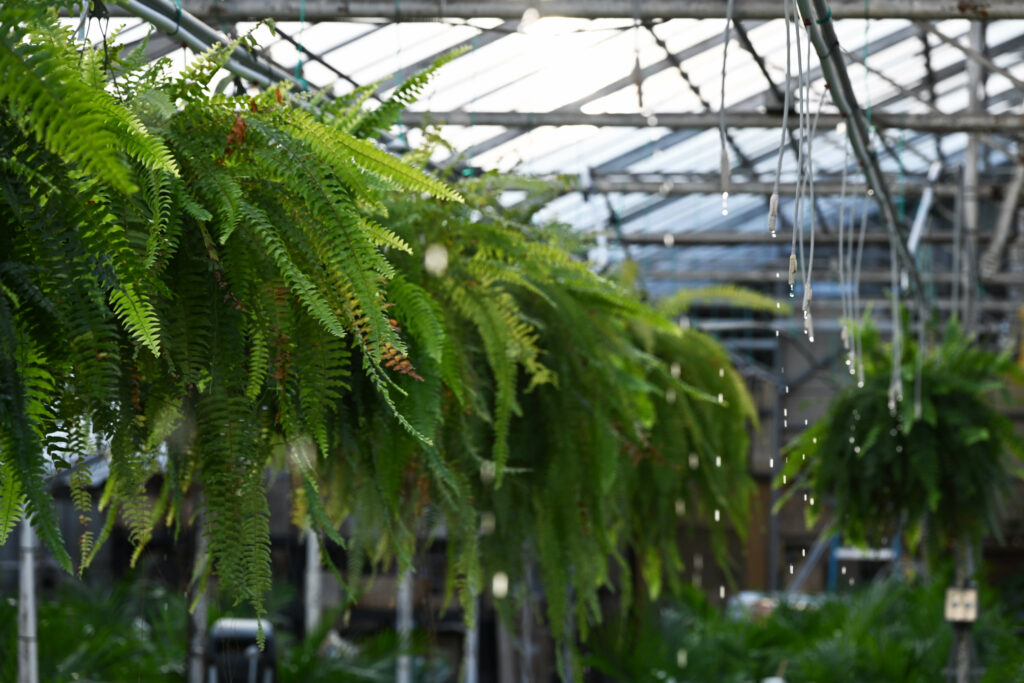
A sense of gloom might hit you in the aftermath of the holiday season, but it’s probably not just because you put the string lights away.
There’s a link between shortened daylight hours in winter and seasonal depression. Some 4 to 6 percent of Americans suffer from seasonal affective disorder, according to Washingtonian magazine, while more suffer from a lesser form known as the winter blues or winter doldrums.
Experts say that seeking out sunlight, a healthy diet, exercise, rest and the support of family and friends are ways to combat the doldrums.
Another way to improve your mood – in the winter but really year-round – is to bring nature into your home or workplace in the form of houseplants.
Multiple studies have found that indoor plants make us happier and healthier. It can take fewer than 20 minutes in the presence of plants to make us feel more at peace, according to the Washington Post.
“In one experiment, participants who spent even five to 10 minutes in a room with a few houseplants felt happier and more satisfied than those in a room without plants. In another study, participants felt more peaceful and positive after spending 15 minutes in a room close to a tall plant (about five feet) compared with other objects.”
Even post-pandemic, we spend most of our lives indoors. Houseplants make us feel more connected to the world outside and help our mental and physical health in many ways.
Reduce stress and anxiety
Time reported on a study in which researchers asked participants to re-pot a houseplant or complete a computer-based task.
“After working with plants, people reported feeling comfortable and soothed, and their blood pressure dropped. The computer task, on the other hand, caused them to feel uncomfortable and ‘artificial,’ and was associated with a spike in blood pressure and sympathetic nervous system activity.”
The stress hormone cortisol, which is found in saliva, decreases when we are around plants.
Reduce depression
Houseplant sales spiked during the pandemic, helping people with their depression, anxiety and “sad days” of isolation, according to one seller of succulents and air plants. That sentiment jibes with a study conducted during stay-at-home orders in Bulgaria. People who had houseplants or a garden “experienced fewer symptoms of depression and anxiety than those who did not,” according to Time.
Introducing plants into your home enhances your mood and helps with loneliness and depression, NBC News reported, noting that “caring for a living thing gives us a purpose and is rewarding – especially when you see that living thing bloom and thrive.”
Improve air quality
Houseplants “essentially do the opposite of what we do when we breathe: release oxygen and absorb carbon dioxide,” according to NBC News. “This not only freshens up the air, but also eliminates harmful toxins.”
NASA found that houseplants can remove up to 87 percent of air toxins in 24 hours.
Increase productivity
Multiple studies, according to Time, concluded that plants boost productivity: College students worked 12 percent faster when plants were added to a windowless computer lab; employees at a call center who had a view of plants made up to 7 percent more calls per hour than colleagues who couldn’t see plants; office workers were 15 percent more productive when plants were introduced into their workspace.
From Psychology Today: “Students and employees with a view of nature, either indoors or right outside their windows, were not only found to be more productive but also more alert, more attentive, more relaxed, in better moods, and less irritated by physical symptoms of allergies and asthma than their counterparts who had no views of plant life or other natural settings.”
Of course, winter eventually will give way to spring, but houseplants will ensure that you receive the benefits of nature no matter the time of year or the conditions outside.

























